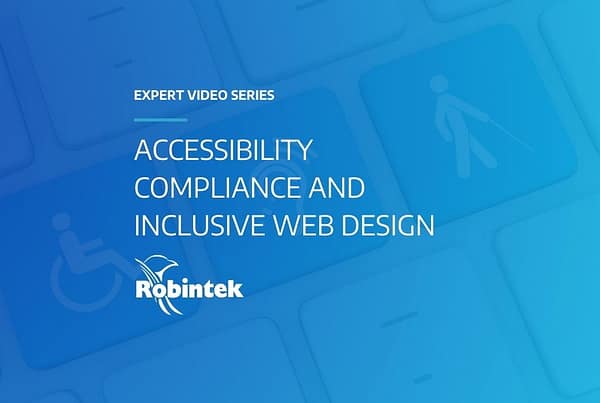
What is ADA Compliance?
In 2010 the US Department of Justice issued an Advanced Notice of Proposed Rulemaking outlining changes to the Americans with Disabilities Act as it relates to web development. Since then the rules have been implemented, outlined here in the Website Accessibility Under Title II of the ADA.
The purpose of these rule changes, and the Americans with Disabilities Act in general, is to ensure the same access to disabled people that the rest of our society enjoys. While some entities like government agencies and government contractors are required to adhere to the program the application to private businesses, as it relates to their digital presence, is less clear.
The simplest way to illustrate the requirements is to walk through a few of the basic elements.
- Videos displayed on the website should have captions. A transcript of the videos content should also be provided in a clickable link below the player.
- Images should all have alt-tags. (This is the text that appears if you let your mouse settle on an image.) The descriptions should be brief and descriptive of the image. Some SEO experts would have you use keywords from their search strategy but the ADA requires accurate descriptions.
- Complex graphics should include detailed explanations in text, including what the clickable link will take them to.
- Webpages should not have flashing images, movement that’s too rapid or strobe effects.
- Text should be placed on sharply contrasting backgrounds.
These examples that would make the website appear differently to the public. Many of the requirements speak to how the website is built. A few examples of those would be:
- Form controls should include proper coding to work with accessibility applications.
- Tables must be properly formatted and the header information identified clearly.
- Make sure that form fields follow a logical tab order.

In 2018 Robintek launched a new website for Bridge Credit Union, which included ADA compliance. To see the finished website visit BridgeCU.org or read the Case Study on the Robintek website!
Now for the tricky part, the application of the law and who must follow the guidelines. There are no inspectors reviewing websites and issuing recommendations or penalties for not following the ADA requirements, like there might be with building inspectors ensuring that ramps, bathrooms and self-opening doors in a business are all in working order.
Most business engaging in this kind of work have either been sued for not being accessible enough or their peers have faced lawsuits. The best place to start is with your legal counsel. Ask them to weigh in on exposure to risk, what level of urgency they would place on correcting the issue and to what degree you should adhere to the rules.
Since 2010 Robintek has studied the rules and implemented new best practices to ensure that websites built by us are accessible, but we do not guarantee ADA compliance unless the client opts to make that a focus of the project. In addition, the rules and guidelines evolve as the internet evolves requiring periodic evaluations of the website. Additional work to regain a compliant status, much like PCI Compliance when it comes to financial transaction security, will often be required.







